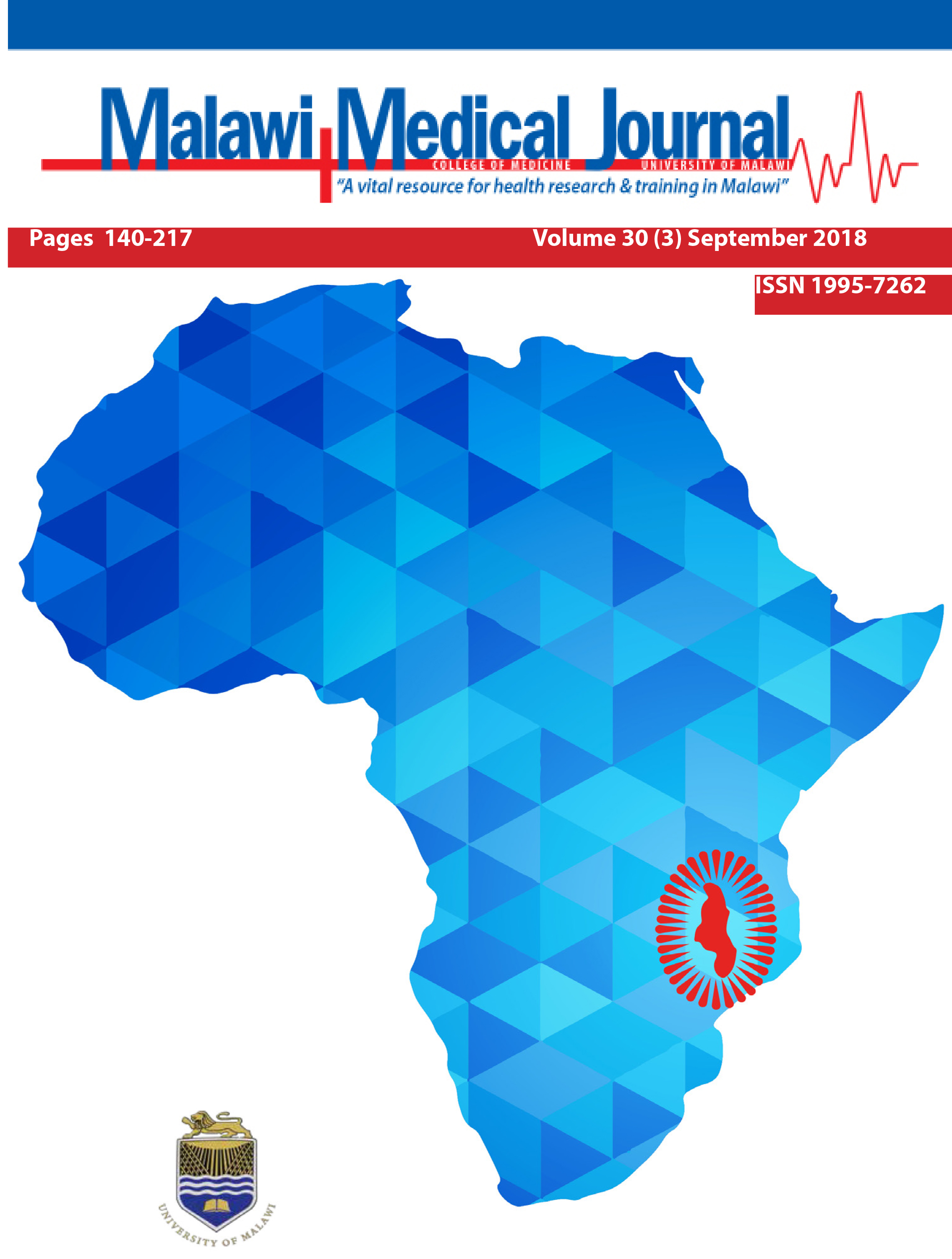Main Article Content
Early experiences in integrating cervical cancer screening and treatment into HIV services in Zomba Central Hospital, Malawi
Abstract
Background
Malawi has the highest rate of cervical cancer globally and cervical cancer is six to eight times more common in women with HIV. HIV programmes provide an ideal setting to integrate cervical cancer screening.
Methods
Tisungane HIV clinic at Zomba Central Hospital has around 3,700 adult women receiving treatment. In October 2015, a model of integrated cervical cancer screening using visual inspection with acetic acid (VIA) was adopted. All women aged 20 and above in the HIV clinic were asked if they had cervical cancer screening in the past three years and, if not, were referred for screening. Screening was done daily by nurses in a room adjacent to the HIV clinic. Cold coagulation was used to treat pre-cancerous lesions. From October 2016, a modification to the HIV programme’s electronic medical record was developed that assisted in matching numbers of women sent for screening with daily screening capacity and alerted providers to women with pre-cancerous lesions who missed referrals or treatment.
Results
Between May 2016 and March 2017, cervical cancer screening was performed in 957 women from the HIV clinic. Of the 686 (71%) women who underwent first ever screening, 23 (3.4%) were found to have VIA positive lesions suggestive of pre-cancer, of whom 8 (35%) had a same-day cold coagulation procedure, seven (30%) deferred cold coagulation to a later date (of whom 4 came for treatment), and 8 (35%) were referred to surgery due to size of lesion; 5/686 (0.7%) women had lesions suspicious of cancer.
Conclusion
Incorporating cervical cancer screening into services at HIV clinics is feasible. A structured approach to screening in the HIV clinic was important.




